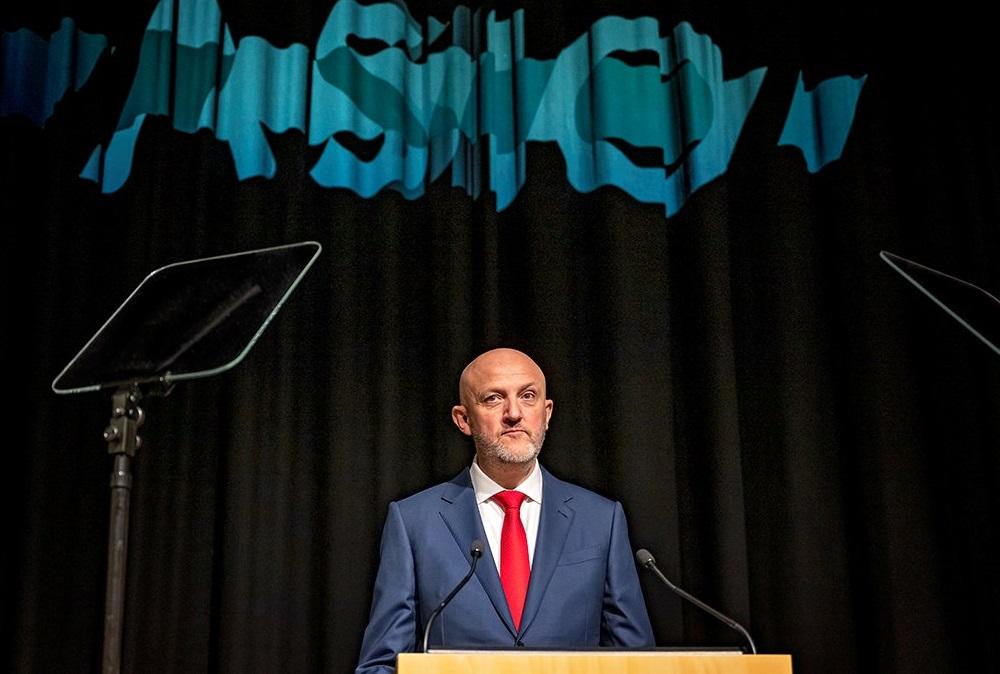
In his 2023 annual threat assessment address, the head of the Australian Security Intelligence Organisation, Mike Burgess, characterised Australia’s security environment as complex, challenging and changing. Burgess made it unequivocally clear that while threats to life are a priority for ASIO, espionage and foreign interference are now the agency’s principal security concern. But even though the threat of domestic terrorism wasn’t the headline issue, that doesn’t mean it hasn’t evolved over the past year.
Today’s terror threat environment demonstrates a clear pattern of dispersal and diffusion of actors and groups beyond the more straightforward categories of the past 20 years. Given the adaptive nature of terrorism and the broadening list of motivations for politically and ideologically motivated violence, the global ‘war on terror’ may never end. However, it is abundantly clear that Australia is enjoying success from its counterterrorism policies.
In September 2014, ASIO assessed the national terrorism threat as ‘high’. The agency’s director-general at the time, David Irvine, faced growing evidence that despite the efforts of ASIO, the Australian Federal Police and border officials, the domestic terrorism threat was growing in terms of the capability and intent of would-be attackers. More specifically, they had credible intelligence indicating that individuals or groups had the intent and capability to conduct a terrorist attack in Australia.
Internationally, the defeat of the Islamic State terror group in most areas it occupied has likely weakened the attraction of its extremist ideology and propaganda. Al-Qaeda has withdrawn to conflict zones with weak governance, and its propaganda, too, has failed to maintain its appeal to potential recruits.
Last November, for the first time in more than eight years, ASIO lowered the national terrorism threat level from ‘probable’ to ‘possible’. This change was in response to ASIO’s assessment that while Australia remains a potential terrorist target, fewer extremists intend to attack onshore than in 2014. In short, although Australia faces a broader set of possible motivations, and faster journeys to radicalisation for terrorists, ASIO’s terrorism caseload has moderated in recent years. However, Burgess reminded us this year that the terrorism threat in some parts of the world remains and is growing in others.
The murders of two police officers and a civilian in the Queensland town of Wieambilla just weeks after the downgrading of the terror alert level illustrates how terror attacks can occur, and will likely continue to occur, even when the threat level is ‘possible’.
The 2023 threat assessment reinforced that the national terrorism threat advisory level would remain at ‘possible’. This assessment is, of course, good news for all Australians. To be clear, Australia still faces a terrorist threat—in a numerical sense, there’s a 50-50 chance of an attack occurring. We must therefore be cautious to refrain from underplaying the law enforcement and intelligence work that must continue to keep our communities safe.
The threat assessment and Burgess’s address highlight the challenges of public discourse using the current terrorism lexicon of left- or ring-wing political alignment. Concerningly, he argued that there ‘is a cohort of individuals motivated by a toxic cocktail of conspiracies, grievances and anti-authority beliefs’.
Most academics agree that a universal definition of right-wing extremism is unattainable at this stage. But that consensus isn’t stopping some from characterising a range of ideological groups, from ‘incels’ to white supremacists, as right-wing extremists. Grouping such diverse ideologies under one banner is unhelpful.
In his speech, Burgess addressed the difference between extremist views and violent extremism. He laid bare the challenge of disentangling individuals and groups with extremist beliefs from those that would undertake violent acts.
Social media has created the kind of anonymity that has emboldened the expression of extremist views and perspectives that would never be publicly shared in the real world. Some have used it to legitimise hate speech as simply personal expression. Easy access to encryption and the dark web has created global echo chambers for the most committed and active extremists. Extremists share views and knowledge within these spaces, sometimes encouraging real-world violence.
Over recent years, government policies have increasingly focused police and intelligence efforts on earlier and earlier disruption of potential threats. This forces both to deal more often with analysing and assessing extremist beliefs, which ultimately could be counterproductive to overall counterterrorism outcomes and possibly social cohesion. Early disruption of extremists is increasingly muddying the distinction between extremism and violent extremism. While there’s a clear link between the two, not all extremists are or will become terrorists.
Governments’ use of police and intelligence agencies to counter extremist narratives and ideologies could be turned against them by extremist propagandists who present those efforts as examples of harassment. Policing extremist belief systems also runs the risk of effectively positioning police, intelligence agencies and courts as quasi-thought-censors. Law enforcement and ASIO should be focused on countering terrorism, not extremist thinking. Police and intelligence agencies should be able to refer intelligence on at-risk individuals to some new form of non-security entity for management when they don’t meet an agreed violent threat threshold.
To reduce the broader impact of extremism on Australian social cohesion requires efforts to counter extremist narratives by removing the cloak of respectability it has often achieved in social media over recent years.